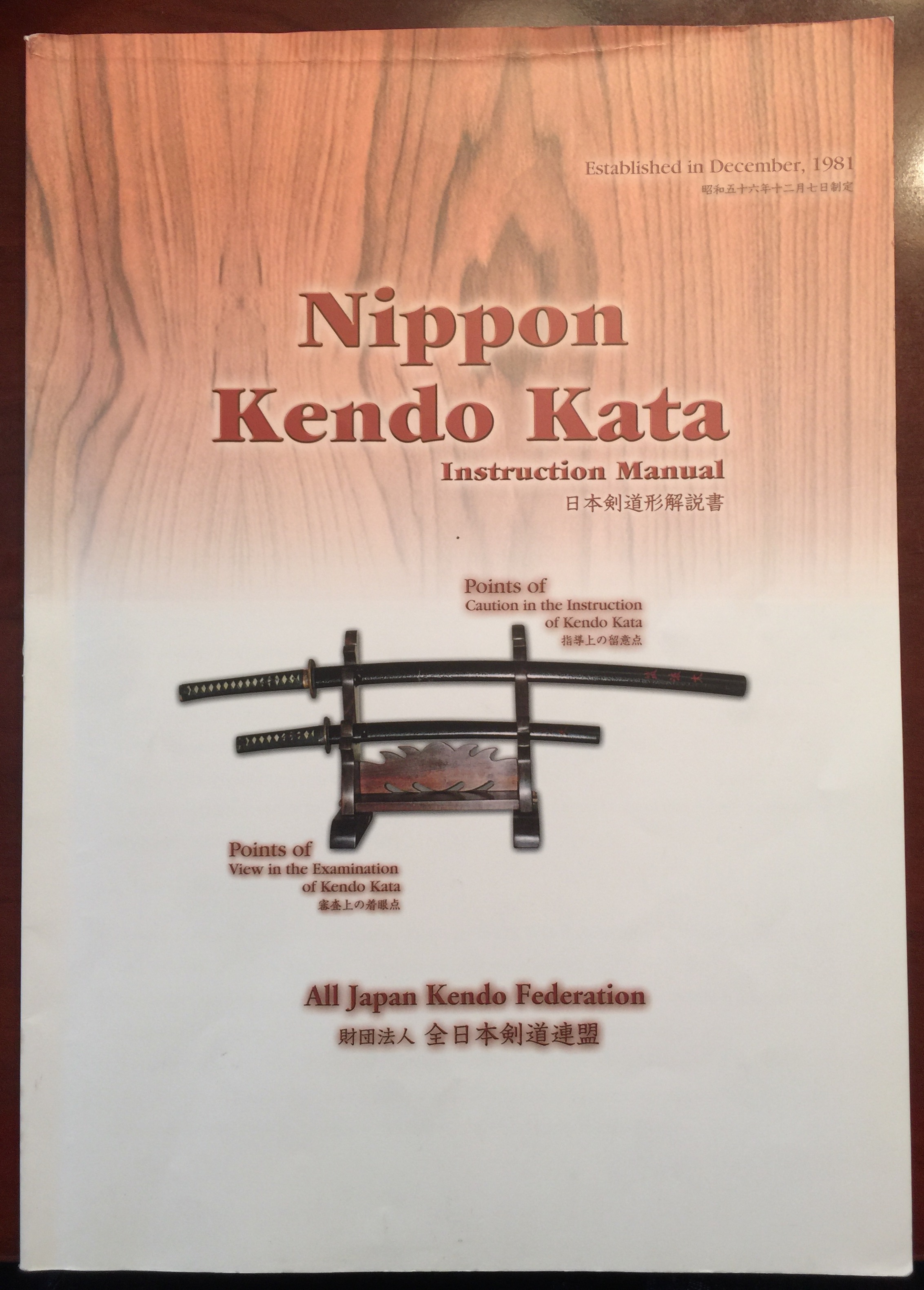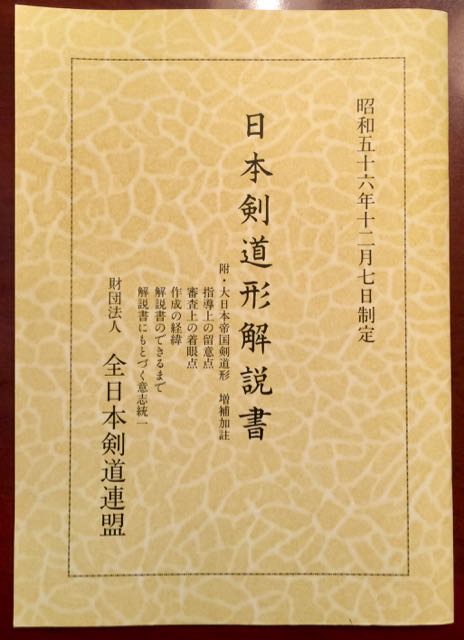You Got It!
All Japan Kendo Federation:
Nihon Kendo Kata
Nihon Kendo Kata was created by integrating many kata (forms) from different kenjutsu schools in 1912. The purpose of this action was, I heard, to keep the traditional kenjutsu forms in kendo to remember where kendo came from.
Kata consists of 7 kata with tachi (long sword) and 3 kata with kodachi (short sword).
We can see some stances that we don't use in the modern kendo anymore. For example, we do not use a kodachi in kendo unless we have two swords.
So kendo kata definitely contains old style kenjutsu moves and they are different from kendo with shinai (shinai kendo). That is why we have to learn these forms.
Maybe because kata does not seem very practical to many people for shinai kendo, many people see kata as something they have to do for their promotion exam (grading). But as all the high rank senseis say, it must be studied more often than it is now.
The No.1 reason why people don't practice kata is probably
"kata is boring".
It may not be as exciting as shinai kendo because kata does not involve active movements like shinai kendo. Also we all know what and how our partner will strike us and what and how we counterattack them. They are all decided. Thus, it is not very exciting.
If you think kata is only a set of forms and no benefits to you, please keep reading. I will introduce the benefits of kata.
Benefits of Kendo Kata
I would like to introduce benefits of kata from Nippon Kendo Kata Instruction Manual (2003).
Kata helps us to learn:
- Correct directions for the Datotsu (strikes and thrusts)
- Correct attack intervals
- Correct body movements
- Sincerity inherent in martial techniques
- Developing Kigurai (pride)
(p.2)
1. We all know that we use a shinai as a sword, so the direction of the blade (hasuji) is very important. Kata gives us a good sense of hasuji and helps use to use our shinai as a sword.
2. We can learn a distance and timing to strike. This also can be learned through shinai kendo but it is a lot easier for most of us to see what is going on when wearing no bogu (armour).
3. Body movements in kata can be difficult. In kendo, we learn okuri-ashi as the basic footwork, in which we have to keep the left foot behind the right foot while moving. In kata, we do not have to keep the left foot behind the right foot.
This confuses beginners. Also there is other footwork involved in kata so for many kata is very hard to learn. However, since we do not have our bogu on and the movements are slower than shinai kendo, it is a good chance to learn these movements.
4. We must concentrate during kata practice. That is also true in shinai kendo but since we are not protected by bogu during kata practice and using bokuto/bokken (wooden sword), we must know what we are doing; otherwise, we may hit our training partner with bokuto. Thus, we must concentrate and learn how to control our sword.
5. With the right attitudes and procedures in our kata study, we can nurture our ki energy. Ki may be translated into various English words; aura, internal energy, mental strength, energy flow and so on.
However, it does not matter what word it is translated into, it is the source of your energy that is not something we can see but we can feel.
We may be able to say kigurai is the level of our internal energy. If the level of your internal energy is high, you feel proud and confidence. You don't feel weak.
On the other hand, when the level of our ki is low, we feel weak and vulnerable. It is not a good idea to have that kind of kigurai in a battle.
Kigurai is much more complicated than just an energy level. It also contains the power of your internal energy, which we may feel as pressure from our opponent. That is called seme in kendo. Some say, "execute a good seme with kigurai before you strike". It roughly means "put pressure on your opponent with the good level of your internal energy before you strike".
Don't worry about this too much if you are 2nd dan or below. You will be able to understand what is kigurai when you improve. This is not something we understand without enough experience in kendo and life. If you want to know more about seme, you can read this article, Seme and San Sappo.
Kendo kata will give us these great benefits. There are some points to improve your kata. Are there any reasons why we don't have to study kata?
Uchitachi Versus Shitachi
We need two people to practice Kendo kata and they have their own role. One is called uchitachi (some people call it uchidachi) and shitachi (some call it shidachi).
Uchitachi is a role of a higher grade people since it is a "teaching" position. Uchitachi initiates movements and controls all the distances. Uchitachi lets shitachi concentrate on learning techniques.
Shitachi is generally a student. It involves more movements and techniques. When uchitachi moves, shitachi follows.
However, since we have to know both sides, we do not have to stick to the rule mentioned above. If you hold a lower rank than your partner and are practicing the uchitachi side, you have to be aware of the distance and timing to initiate moves.
Breathing of Kendo Kata
I recommend learning how to breathe in kata, after you acquire the movements. In other words, you will not be able to learn how to breathe because you are too busy to try to remember the kata movements.
It is still a good idea to know how to breathe in kata. If you want to know how it should be done, this article, Breathing in Kata, may help.
These are the kata we learn
Tachi vs. Tachi
Kata No.1: Ippon-me
Kata No.2: Nihon-me
Kata No.3: Sanbon-me
Kata No.4: Yonhon-me
Kata No.5: Gohon-me
Kata No.6: Roppon-me
Kata No.7: Nanahon-me
Tachi vs. Kodachi
Kata No.8: Ippon-me
Kata No.9: Nihon-me
Kata No.10: Sanbon-me



